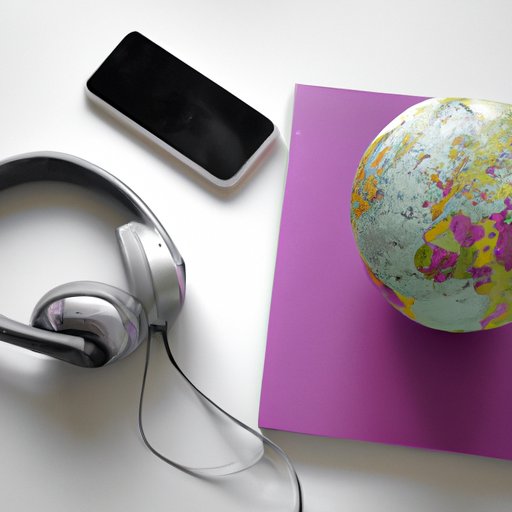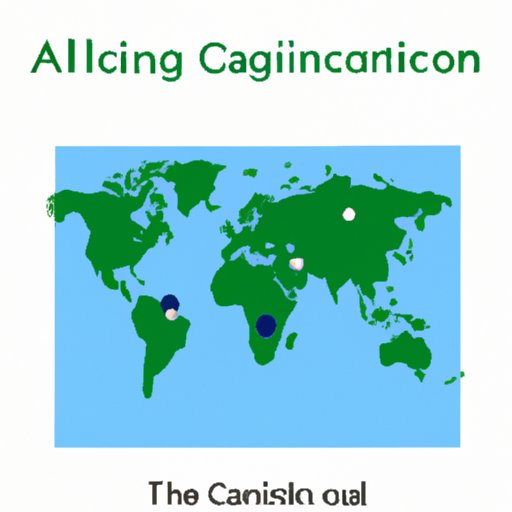
Introduction
Making international calls can be intimidating, especially if you’re not familiar with the technical aspects of dialing internationally. Whether you’re traveling abroad, calling friends and family in other countries, or conducting business with overseas partners, having the ability to communicate effectively across borders is crucial in today’s connected world.
This article aims to provide a comprehensive guide to international dialing that covers all aspects of making international calls, including tips and tricks, different methods and technologies, the technical aspects of international dialing, and best practices for staying connected with loved ones abroad.
Tips and Tricks: A Comprehensive Guide to Dialing International
The first step in making international calls is to understand the challenges and solutions for dialing internationally. Some common issues with international dialing include complicated dialing patterns, incompatible devices, different time zones, and language barriers.
To make international calls from different countries and devices, follow these step-by-step instructions:
1. Dial the exit code: Every country has an exit code or international access code that allows you to make international calls. The exit code usually starts with a plus (+) sign or two zeros (00). For example, if you’re calling from the United States to Mexico, you need to dial the exit code “+1” or “011”.
2. Dial the country code: Every country has a unique country code that identifies its telecommunications network. The country code is usually one to three digits long. For example, the country code for Mexico is “+52”.
3. Dial the area code: Some countries have area codes or city codes that you need to dial before the actual phone number. The area code is usually two to four digits long. For example, the area code for Mexico City is “55”.
4. Dial the phone number: After you dial the exit code, country code, and area code (if applicable), you can dial the actual phone number. The phone number is usually seven to ten digits long.
To troubleshoot common issues with international dialing, try these tips:
– Check your phone plan: Before you travel abroad or make international calls, check your phone plan to see if you have any international roaming or calling options. Some plans charge high fees for international calls and data usage, while others offer free or discounted rates.
– Use Wi-Fi and messaging apps: If you have access to Wi-Fi, you can use messaging apps like WhatsApp, Skype, or Viber to make free or low-cost calls and send messages to other users of the same app.
– Use calling cards or apps: If you don’t have access to Wi-Fi, you can use calling cards or apps like Rebtel, Google Voice, or Vonage to make international calls from your phone or computer. These services usually offer cheaper rates than traditional phone lines.
The Ultimate Guide to Making International Calls from Anywhere in the World
There are different methods and technologies for making international calls, each with its own pros and cons. Some of the most popular methods include:
– Traditional phone lines: Using a landline or mobile phone to make international calls is the most common method. While it’s easy to use and widely available, it can be expensive and offer poor call quality.
– VoIP (Voice over Internet Protocol): VoIP technology allows you to make calls over the internet instead of traditional phone lines. VoIP services like Skype, WhatsApp, or Zoom offer free or low-cost international calling options, but they require a stable internet connection and compatible devices.
– Messaging apps: Messaging apps like WhatsApp, Viber, or WeChat allow you to make free or low-cost calls and send messages to other users of the same app. They also offer additional features like group chats, video calls, and file sharing.
When choosing a method of making international calls, consider factors like cost, quality, accessibility, and compatibility with your devices and communication needs.
International Dialing Explained: How to Make Phone Calls across Borders
To dial international phone numbers, you need to understand the technical aspects of international dialing, such as country codes, area codes, phone number formats, and other conventions.
Most international phone numbers follow a standard format that consists of the exit code, country code, area code (if applicable), and phone number. For example, a phone number from Australia might look like this: “+61 2 5555 1234”, where “+61” is the country code, “2” is the area code, and “5555 1234” is the phone number.
To dial an international phone number from your country, you need to follow the dialing pattern of your country’s telecommunications network. Some networks require you to dial the exit code before the country code, while others require you to dial them in reverse order.
To learn more about the technical aspects of international dialing, you can consult online resources like the International Telecommunication Union or use online tools like CountryCode.org or HowToCallAbroad.com.
Start Talking: A Beginner’s Guide to Dialing International
If you’re new to international dialing, you might feel intimidated or overwhelmed by the complexity of the process. However, with some basic tips and advice, you can easily make international calls and stay connected with loved ones abroad.
Some tips for novices include:
– Familiarize yourself with the dialing patterns of your country and the country you’re calling.
– Check your phone plan for international roaming or calling options.
– Practice dialing international numbers with a friend or family member before making actual calls.
– Use messaging apps or VoIP services to make free or low-cost calls.
Remember that making international calls is not just about the technical aspects of dialing numbers but also about the emotional and cultural aspects of building relationships across borders. Don’t be afraid to reach out to people from other countries and share your experiences and stories.
How to Avoid Expensive International Calls: A Guide to Saving Money While Staying Connected
One of the biggest challenges of making international calls is the cost. International calls can be expensive, especially if you don’t have a suitable phone plan or use traditional phone lines.
To minimize these costs, you can try these strategies:
– Use messaging apps or VoIP services to make free or low-cost calls over the internet.
– Use calling cards or apps that offer discounted rates for international calls.
– Choose the right phone plan that includes international calling options or offers affordable roaming rates.
– Use Wi-Fi networks to avoid data charges for international calls.
By using these strategies, you can save money while staying connected with loved ones abroad and conducting business with international partners.
The Art of Dialing Internationally: Best Practices to Stay Connected with Loved Ones Abroad
Making international calls is not just a matter of dialing numbers but also a matter of building meaningful relationships across borders. The emotional and cultural aspects of international connections can pose challenges like language barriers, time differences, and social etiquette.
To overcome these challenges, you can try these best practices:
– Learn a few words or phrases in the language of the country you’re calling.
– Be aware of time differences and schedule calls at mutually convenient times.
– Respect cultural differences and norms of behavior when communicating with people from other countries.
– Be patient and understanding with technical difficulties or language barriers.
Remember that international connections can enrich your life and broaden your horizons. By staying connected with loved ones abroad, you can learn about different cultures, share experiences and stories, and build lasting relationships.

International Calling: A Simple Guide for Making Connections Around the Globe
Making international calls is a necessary skill in today’s world of globalization and interconnectedness. Whether you’re calling your family and friends, conducting business, or exploring new cultures, having the ability to communicate across borders is essential.
This article has provided a comprehensive guide to international dialing that covers tips and tricks, different methods and technologies, the technical aspects of international dialing, and best practices for staying connected with loved ones abroad.
We hope that this guide has been helpful in demystifying the process of making international calls and inspiring you to stay connected with the world around you.
Please let us know your feedback and questions and share your own international calling experiences in the comments below. Let’s start talking!
Conclusion
Thank you for reading this article on international dialing. We hope that you have found this guide informative, useful, and inspiring. Making international connections can be challenging, but it can also be rewarding and enriching.
Remember to consider the technical and emotional aspects of international dialing, be patient and respectful with cultural differences, and use the strategies and tips provided in this guide to save money and stay connected with your loved ones abroad.
If you have any questions, feedback, or suggestions for future articles, please don’t hesitate to contact us.




